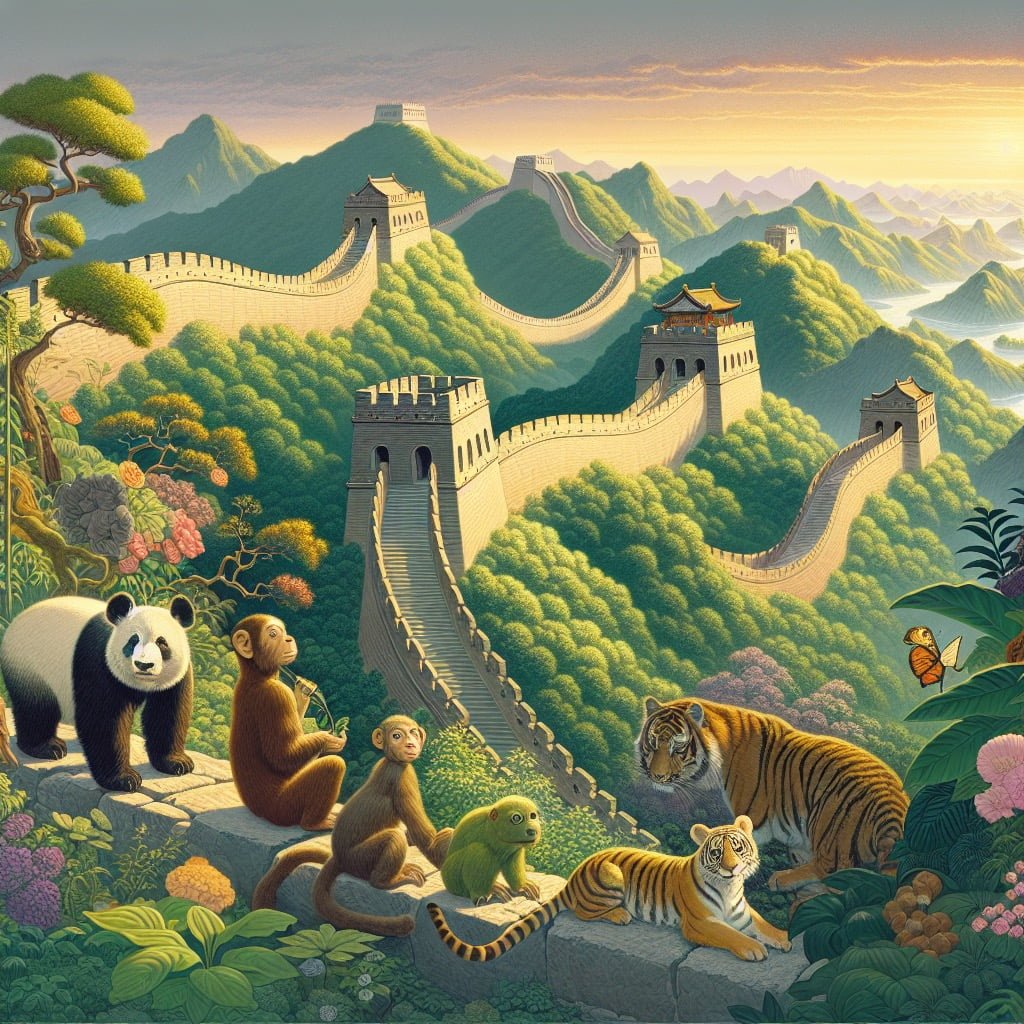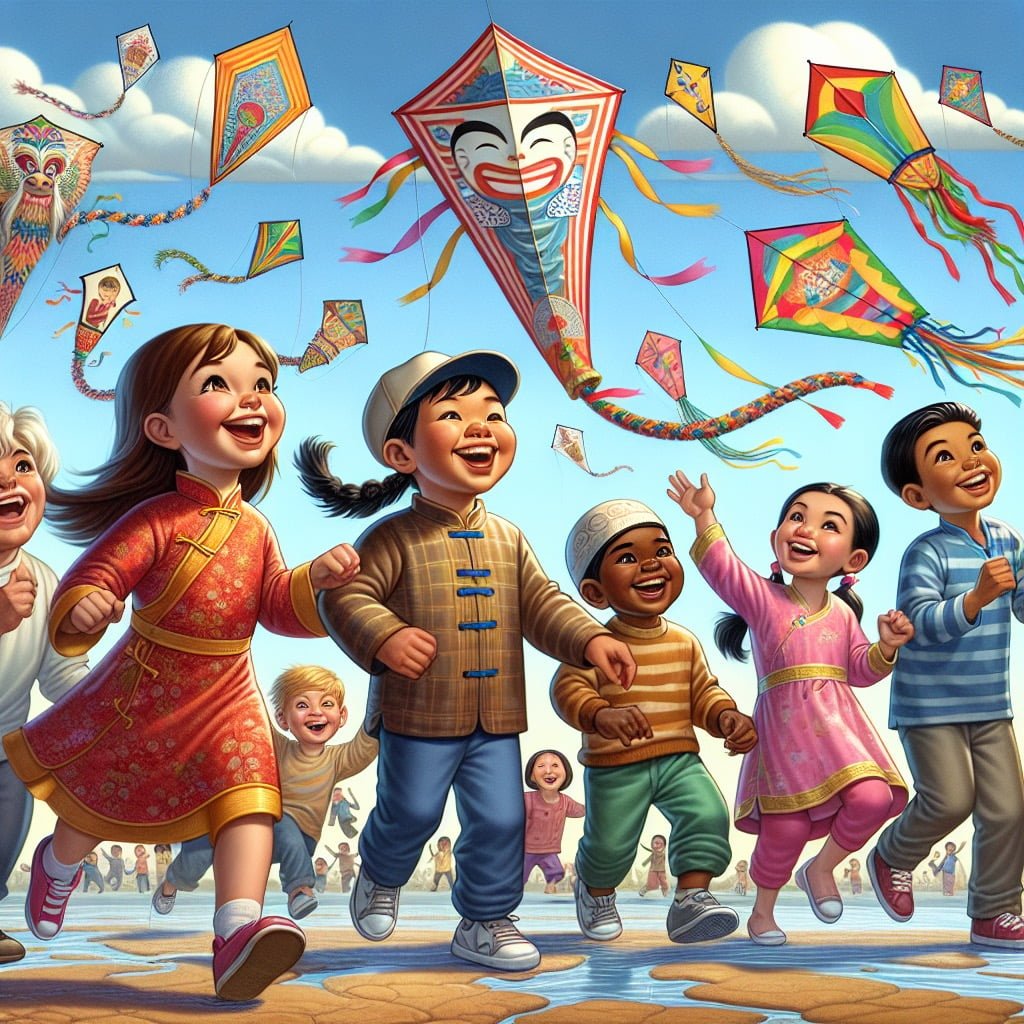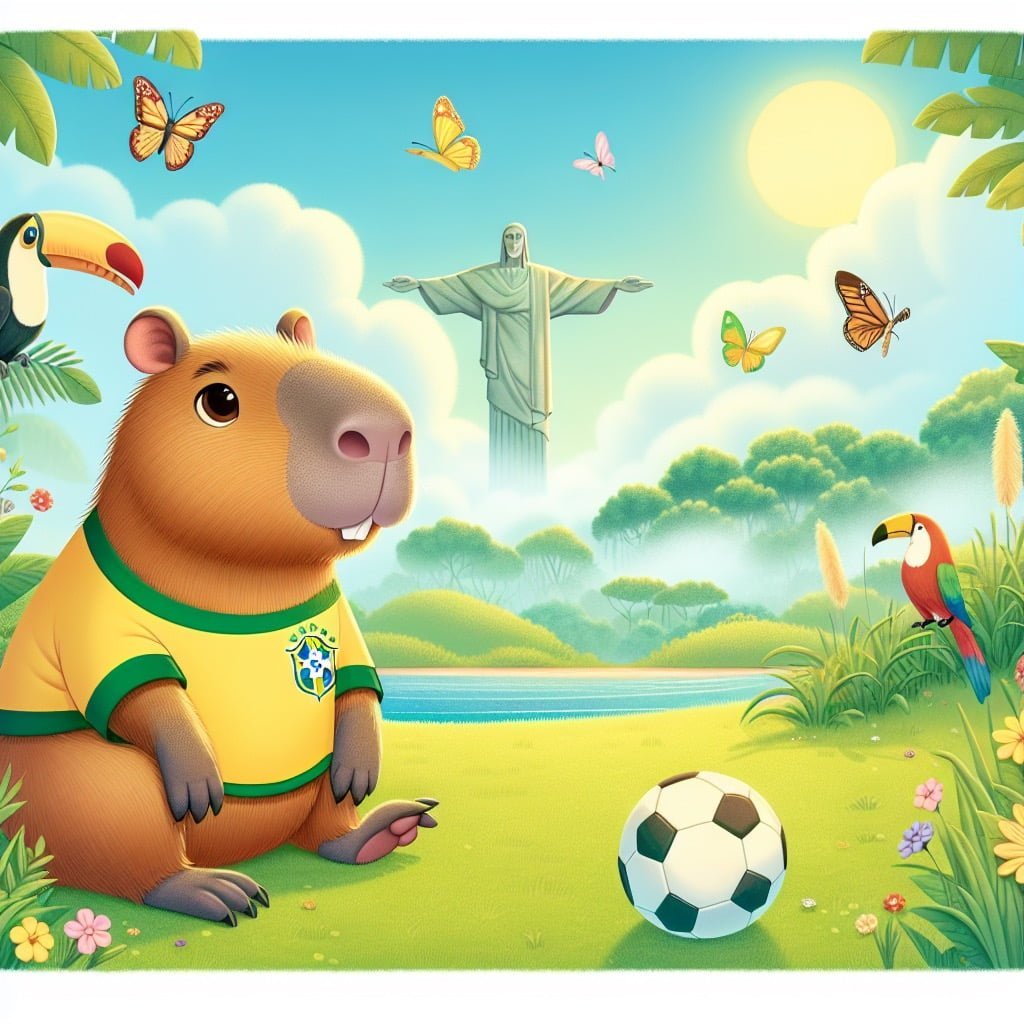Welcome to an exciting journey into the fascinating world of China Facts For Kids! If you’re curious about the wonders of China, from the iconic Great Wall to the ancient Terracotta Army, you’re in for a treat. Delve into the rich history, innovative inventions, and unique cultural traditions of this extraordinary country. Discover how the Great Wall of China, spanning over 13,000 miles, is a marvel visible from space. Learn about China’s contributions to the world, such as paper, gunpowder, and compasses. Explore the significance of the Giant Panda, found only in China, and dive into the dynamic population of over 1.4 billion people. Uncover the mysteries of the Forbidden City and the innovation of Chinese paper money. Delight in the age-old art of flying kites and the symbolism of Chinese dragons. Join us as we uncover the diverse and captivating world of China through fun and educational facts that will inspire and intrigue kids of all ages. Let’s embark on this enlightening adventure together!
China Facts For Kids
1. The Great Wall of China is Visible from Space

For younger kids: The Great Wall of China is so big, it can be seen from way up high!
For older kids: The Great Wall of China spans over 13,000 miles and is one of the most impressive architectural achievements in human history. While it’s not visible to the naked eye from space, it can be detected with the assistance of advanced imaging technology.
Detailed explanation:One of the most popular China Facts For Kids is the belief that the Great Wall of China is visible from space. While this statement has been widely accepted as fact for many years, it is actually a common misconception. The Great Wall is not easily visible from space with the naked eye.
The notion that the Great Wall of China is visible from space likely originated from the misconception that it is the only man-made structure visible from the Earth’s orbit. However, astronauts and space agencies have clarified that the Wall is not easily distinguishable from space without the aid of magnification tools like telescopes or binoculars. In fact, other man-made structures such as highways and cities can also be seen from space, depending on the conditions.
The Great Wall of China stretches over 13,000 miles across China, with different sections constructed during different time periods by various dynasties. The Wall was built primarily as a defense system to protect the Chinese states and empires against invasions from nomadic groups and military forces. Despite its impressive length and historical significance, the Great Wall’s width is only about 30 feet in most places, making it difficult to spot from the vastness of outer space.
In conclusion, while the Great Wall of China is an iconic and monumental structure, it is not easily visible from space without the aid of magnification tools. This China Facts For Kids should be shared accurately to avoid perpetuating common misconceptions about this incredible ancient marvel.
China Facts For Kids
2. China Invented Paper, Gunpowder, and Compasses

For younger kids: China made a lot of amazing things like paper, gunpowder, and compasses!
For older kids: Among its many contributions to the world, China gave us the gift of paper, gunpowder, and magnetic compasses, which revolutionized communication, warfare, and navigation in the ancient world.
Detailed explanation:China has a long history of innovation and technological advancements. One of the most noteworthy contributions of ancient China to the world is the invention of paper. Papermaking in China dates back to the second century BC, when the Chinese began using mulberry bark, hemp, and rags to create a writing surface. This innovation revolutionized communication, education, and the spread of knowledge, as it was much more convenient and affordable than traditional writing materials like bamboo strips or silk.
Another important invention credited to China is gunpowder. Developed in the 9th century, gunpowder was initially used for fireworks and celebrations before its military applications were discovered. Gunpowder eventually changed the nature of warfare around the world, leading to the development of firearms and cannons. The impact of gunpowder on history cannot be overstated, as it shifted the balance of power among nations and changed the course of conflicts.
Lastly, the compass is another significant invention associated with China. The compass was first invented during the Han Dynasty (206 BC – 220 AD) for divination purposes, but later adapted for navigation. By using the Earth’s magnetic field, the compass allowed sailors to determine their direction even when out of sight of land. This innovation revolutionized maritime exploration and trade, enabling voyages to distant lands and the establishment of global trading networks.
In conclusion, these three inventions – paper, gunpowder, and compasses – are just a few examples of the many contributions that China has made to the world. By fostering creativity, ingenuity, and a spirit of exploration, China has left a lasting impact on human civilization. Exploring more China Facts For Kids can reveal even more fascinating insights into the rich history and heritage of this ancient civilization.
China Facts For Kids
3. The Giant Panda is Found Only in China

For younger kids: The giant panda only lives in one place – China!
For older kids: The giant panda is a beloved symbol of China and is found only in the mountainous regions of central China, making it a national treasure and a protected species.
Detailed explanation:The Giant Panda, one of the most beloved and recognizable animals in the world, is a unique species that is found exclusively in China. This iconic black and white bear is native to the mountain ranges of central China, particularly in the Sichuan province. The Giant Panda’s habitat is characterized by dense bamboo forests, where it feeds almost exclusively on bamboo shoots, leaves, and stems.
China Facts For Kids, the habitat of the Giant Panda is crucial for its survival as it provides the necessary food and shelter for these solitary animals. Unfortunately, due to deforestation, habitat loss, and fragmentation, the Giant Panda is now classified as a vulnerable species by the International Union for Conservation of Nature (IUCN). Conservation efforts in China, such as the establishment of nature reserves and breeding programs, have helped to stabilize the Giant Panda population in recent years.
Another interesting fact about the Giant Panda is its unique physical features, such as its distinctive black and white fur coat and iconic eye patches. These markings are believed to help the Giant Panda to camouflage itself in its natural habitat. Additionally, the Giant Panda’s large, round face and gentle demeanor have endeared it to people around the world, making it a popular symbol of wildlife conservation.
In conclusion, the Giant Panda’s existence is closely tied to China, where it is an important cultural and ecological symbol. By protecting the Giant Panda’s habitat and raising awareness about the importance of conservation, we can ensure that this iconic species continues to thrive for future generations.
China Facts For Kids
4. China Has the World’s Largest Population

For younger kids: There are a lot of people in China—a whole lot!
For older kids: With over 1.4 billion people, China has the largest population of any country in the world, representing almost 1/5 of the global population.
Detailed explanation:China Facts For Kids: China, a vast and diverse country located in East Asia, is home to the world’s largest population. With over 1.4 billion people, China’s population size is truly staggering. This fact can be attributed to a combination of historical, cultural, and geographical factors.
One key factor contributing to China’s large population is its long and rich history. China is one of the world’s oldest civilizations, with a history dating back thousands of years. Over the centuries, China has developed a strong cultural emphasis on family and procreation. Traditionally, having a large family was seen as a sign of prosperity and success, leading to a population boom.
Additionally, China’s vast size and diverse geography have played a role in its large population. The country has a wide range of ecosystems and climates, from the dense forests of the south to the arid deserts of the west. This diverse landscape has allowed for a variety of agricultural practices, leading to increased food production and the ability to support a larger population.
In recent years, China has implemented policies to control its population growth, such as the infamous one-child policy. While this policy has helped to stabilize China’s population growth, the country still remains the most populous in the world. As China continues to develop and modernize, it will be interesting to see how its population size evolves in the future.
Overall, China’s status as the world’s most populous country is a testament to its rich history, cultural values, and diverse geography. Its large population has both benefits and challenges, making it a fascinating topic for kids to learn about.
China Facts For Kids
5. The Forbidden City Has 9,999 Rooms

For younger kids: The Forbidden City has almost 10,000 rooms—it’s huge!
For older kids: The Forbidden City in Beijing, once the imperial palace of Chinese emperors, contains a staggering 9,999 rooms. The number 9 is special in Chinese culture, symbolizing eternity and the emperor’s connection to the divine.
Detailed explanation:One fascinating fact about the Forbidden City in Beijing, China is that it is believed to have a total of 9,999 rooms. This vast, sprawling complex was the imperial palace of China’s emperors for over 500 years, and its massive size and intricate architecture make it one of the most iconic landmarks in the country.
The number 9,999 holds significant symbolism in Chinese culture. In Chinese numerology, the number nine is considered lucky because it sounds similar to the word for “long-lasting” or “forever” in Chinese. Therefore, the Forbidden City’s 9,999 rooms are thought to bring good luck and longevity to the imperial family that once resided within its walls.
It is important to note that while the exact number of rooms in the Forbidden City may vary depending on how one defines a “room,” the significance of the number 9,999 remains the same. This massive complex is a masterpiece of Chinese architecture, with its red walls, golden roofs, and intricate carvings symbolizing the wealth and power of the emperors who once lived there.
Today, the Forbidden City is a UNESCO World Heritage Site and a popular tourist destination, attracting millions of visitors from around the world each year. Exploring its 9,999 rooms offers a glimpse into China’s rich history and cultural heritage, making it a must-visit for anyone interested in learning more about China’s past.
China Facts For Kids
6. China Was the First Country to Develop Paper Money

For younger kids: China used paper for money before anyone else!
For older kids: China was the first country to introduce paper money during the Tang Dynasty in the 7th century. This innovative form of currency replaced heavy metal coins and helped facilitate trade and economic growth.
Detailed explanation:One fascinating fact about China is that it was the first country to develop paper money. This innovation revolutionized the way people conducted transactions and paved the way for modern banking systems.
The use of paper money in China can be traced back to the 7th century during the Tang Dynasty. At the time, merchants and traders were burdened with the weight and inconvenience of carrying around heavy metal coins for transactions. To address this issue, the Chinese government began issuing promissory notes made of paper as a form of currency. These notes were backed by the government’s reserves of precious metals, making them a trusted medium of exchange.
The introduction of paper money in China led to increased trade and economic growth, as it simplified transactions and reduced the need for carrying large amounts of coins. It also facilitated the development of banking institutions and lending practices, as people could now deposit their money with trusted institutions and receive interest on their savings.
China’s early adoption of paper money eventually spread to other parts of the world, influencing the development of banking and finance globally. Today, paper money is used by virtually every country in the world as a standard form of currency.
In conclusion, China’s invention of paper money is a significant contribution to the history of economics and finance. It showcases China’s long history of innovation and technological advancement in various fields, making it a truly fascinating subject for exploration and study.
China Facts For Kids
7. The Terracotta Army is Over 2,000 Years Old

For younger kids: An army made of clay has been around for a very long time!
For older kids: The Terracotta Army, discovered in 1974, is a collection of life-size clay soldiers and horses that was buried with China’s first emperor, Qin Shi Huang. This incredible archaeological find dates back over 2,000 years.
Detailed explanation:The Terracotta Army is a collection of terracotta sculptures depicting the armies of Qin Shi Huang, the first Emperor of China. These sculptures were buried with the emperor in 210-209 BC in order to protect him in the afterlife. The Terracotta Army is located in the city of Xi’an in China and is estimated to be over 2,000 years old.
This incredible archaeological find is not only a testament to the advanced technology and craftsmanship of ancient China, but it also provides valuable insights into the military tactics and weaponry of the time. Each of the terracotta soldiers is unique, with individualized facial features and hairstyles, reflecting the diverse population of the Qin Dynasty.
The discovery of the Terracotta Army in 1974 by local farmers was a groundbreaking moment in Chinese archaeology. Since then, thousands of soldiers, horses, chariots, and weapons have been unearthed, making it one of the most significant archaeological sites in the world. The preservation and restoration of the Terracotta Army continue to be ongoing projects, with new discoveries and advancements in technology shedding light on this ancient wonder.
Visitors from around the world come to marvel at the Terracotta Army, learning about the history and culture of China in the process. The sheer size and detail of the sculptures are truly awe-inspiring, making it a must-see destination for anyone interested in China Facts For Kids or ancient history.
China Facts For Kids
8. Chinese New Year Lasts for 15 Days

For younger kids: China has a super long celebration for the New Year!
For older kids: Chinese New Year, also known as the Spring Festival, is a major holiday in China that lasts for 15 days, filled with family gatherings, parades, traditional foods, and stunning fireworks displays.
Detailed explanation:Chinese New Year, also known as Spring Festival, is a vibrant and festive holiday celebrated by billions of people across the globe. One interesting fact about this important holiday is that it lasts for a remarkable 15 days. This extended celebration is filled with various traditions and customs that have been passed down for generations in Chinese culture.
During the 15 days of Chinese New Year, families gather together to honor their ancestors, enjoy delicious meals, exchange gifts, and participate in lively parades and performances. Each day of the festival holds a special significance and is marked by different activities.
On the eve of Chinese New Year, families clean their homes and decorate them with red lanterns and paper cutouts to ward off evil spirits and welcome good luck. The first day of the festival is reserved for honoring ancestors and visiting temples to pray for a prosperous year ahead.
One popular tradition during Chinese New Year is the giving of red envelopes, known as “hongbao,” which contain money as a symbol of good luck and prosperity. Dragon and lion dances are also performed to bring good fortune and ward off evil spirits.
The 15 days of Chinese New Year culminate in the Lantern Festival, where beautiful lanterns are displayed and released into the sky to mark the end of the holiday. This colorful and joyous celebration is a time for family, friends, and communities to come together and create lasting memories.
In conclusion, Chinese New Year lasting for 15 days is a testament to the rich cultural heritage and traditions of China. By honoring the past and looking towards the future, this holiday embodies the spirit of unity, prosperity, and hope for a new beginning. China Facts For Kids are a fascinating way to learn about the customs and traditions of this vibrant and diverse country.
China Facts For Kids
9. Kites Were Invented in China Over 2,000 Years Ago

For younger kids: China made kites a long, long time ago!
For older kids: Kites were originally invented in China over 2,000 years ago and were used for signaling, religious ceremonies, and measuring distances. They later became popular for recreational purposes and spread to other parts of the world.
Detailed explanation:Kites were invented in China over 2,000 years ago, making them one of the oldest known flying objects created by humans. This invention is a fascinating aspect of Chinese history and culture, showcasing the innovative and creative spirit of the ancient Chinese people.
One of the earliest recorded uses of kites in China was for military purposes. They were used to send messages, measure distances, and even signal troops during battles. This demonstrates the practical applications of kites and their importance in ancient Chinese warfare.
In addition to their military uses, kites were also used for recreational and ceremonial purposes. They were flown during celebrations and festivals, adding a colorful and festive element to the events. Kites were also believed to bring good luck and ward off evil spirits, further highlighting their significance in Chinese folklore and superstitions.
The design and construction of kites have evolved over the centuries, with different shapes, sizes, and materials being used. Traditional Chinese kites were often made from bamboo and silk, showcasing the craftsmanship and attention to detail of the ancient Chinese artisans.
Today, kites remain a popular pastime in China and around the world. They are enjoyed by people of all ages and are flown in festivals, competitions, and as a way to relax and unwind. The legacy of kite flying in China continues to be celebrated and serves as a reminder of the country’s rich cultural heritage.
In conclusion, the invention of kites in China over 2,000 years ago is a fascinating China Facts For Kids that highlights the ingenuity and creativity of the ancient Chinese people.
China Facts For Kids
10. Chinese Dragons Symbolize Power and Good Luck

For younger kids: Dragons in China mean good luck and power!
For older kids: In Chinese culture, dragons are seen as symbols of power, strength, and good luck. They are revered creatures that bring blessings and are often associated with the emperor and imperial authority.
Detailed explanation:In Chinese culture, dragons symbolize power, strength, and good luck. These mythical creatures are highly revered and are often seen as benevolent forces that bring prosperity and fortune. Chinese dragons are different from the Western conception of dragons, which are often portrayed as fierce and destructive creatures.
One interesting aspect of Chinese dragons is their association with water. In Chinese folklore, dragons are believed to have power over bodies of water such as rivers, lakes, and seas. This is why dragon boat races are such a popular tradition in China, especially during the Dragon Boat Festival. The boats are decorated with dragon heads and tails to honor the dragon’s auspicious powers.
Chinese dragons are also closely linked to the Emperor and the imperial family. The Emperor was often referred to as the “Dragon” and his throne was known as the “Dragon Throne.” This reflects the belief that the Emperor had a divine connection to the dragon, which symbolized his authority and legitimacy.
Children in China grow up hearing stories about dragons and their magical powers. These mythical creatures are featured in many Chinese myths and legends, further cementing their status as symbols of good luck and fortune. In modern times, Chinese dragons continue to be popular symbols in Chinese art, crafts, and celebrations.
In conclusion, Chinese dragons are powerful symbols of luck and prosperity in Chinese culture. Their association with water, the Emperor, and mythical stories all contribute to their revered status in Chinese society. Learning about China Facts For Kids can provide valuable insights into the rich symbolism and traditions surrounding Chinese dragons.
Did You Know?
Chinese people traditionally eat long noodles on their birthdays to symbolize long life and good fortune.
Summary of China Facts For Kids
Discovering China Facts For Kids is more than just learning interesting tidbits about a country with a rich history and culture. It’s about fostering curiosity, appreciation, and understanding of a nation that has played a significant role in shaping the world we live in today. By exploring fun facts about China, children can develop a broader perspective on diverse cultures, traditions, and natural wonders.
From the Great Wall to the Terracotta Warriors, the inventions of paper, gunpowder, and the compass, to the unique geography and wildlife, there is so much for young minds to uncover. By delving into the fascinating world of China, kids can not only expand their knowledge but also cultivate a sense of wonder and respect for the incredible achievements of the past and the beauty of the present.
So, dive into the captivating world of China Facts For Kids and embark on a journey of exploration and discovery that will inspire a lifelong love of learning and appreciation for the wonders of this extraordinary nation.
Sources and additional information for China Facts For Kids
WikipediaBritannicaCIA World FactbookCentral Intelligence Agency (CIA)The World BankUnited Nations Children’s Fund (UNICEF)BBC NewsLonely PlanetCouncil on Foreign RelationsThe World Factbook (CIA)United NationsBBC Country ProfilesLonely PlanetThe World Bank CountriesUNESCO World Heritage CentreCountryReportsGlobalEdge (Michigan State University)Transparency International – The Global Corruption Barometer




